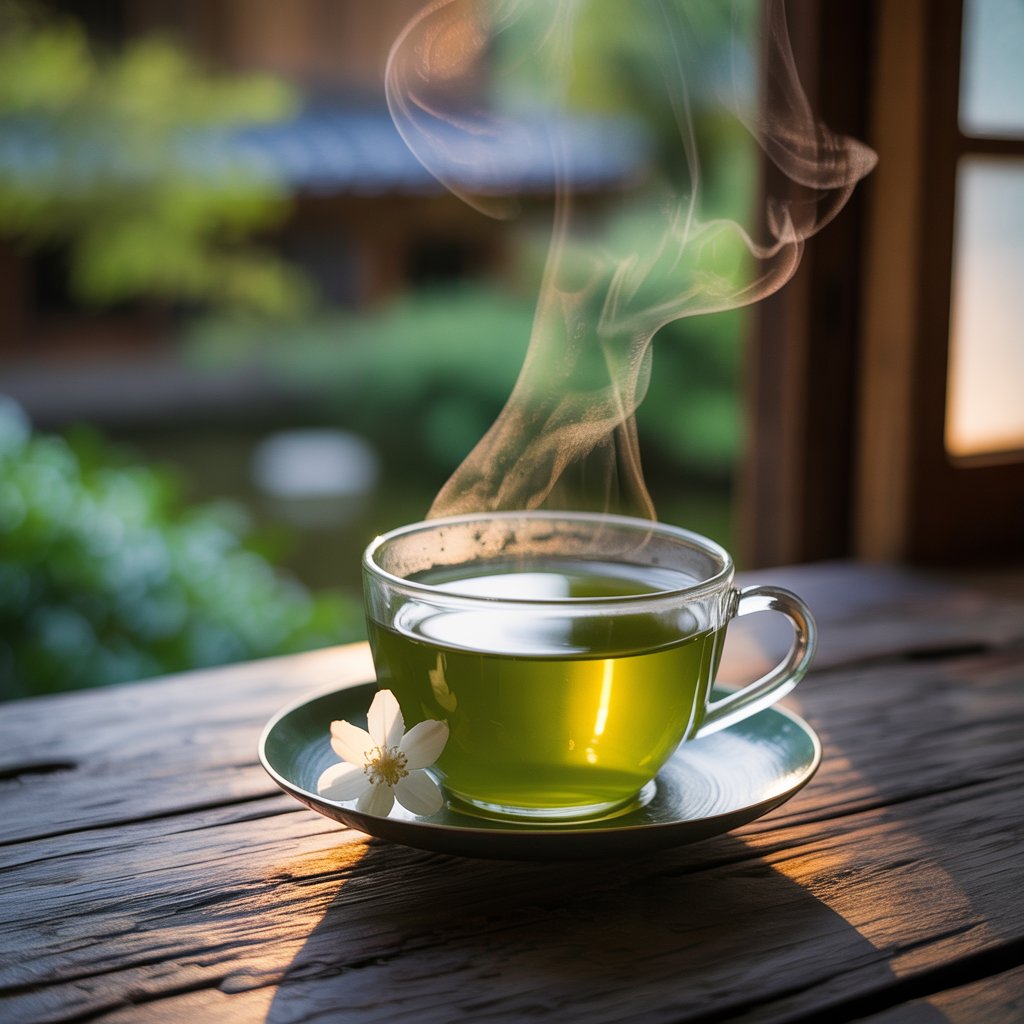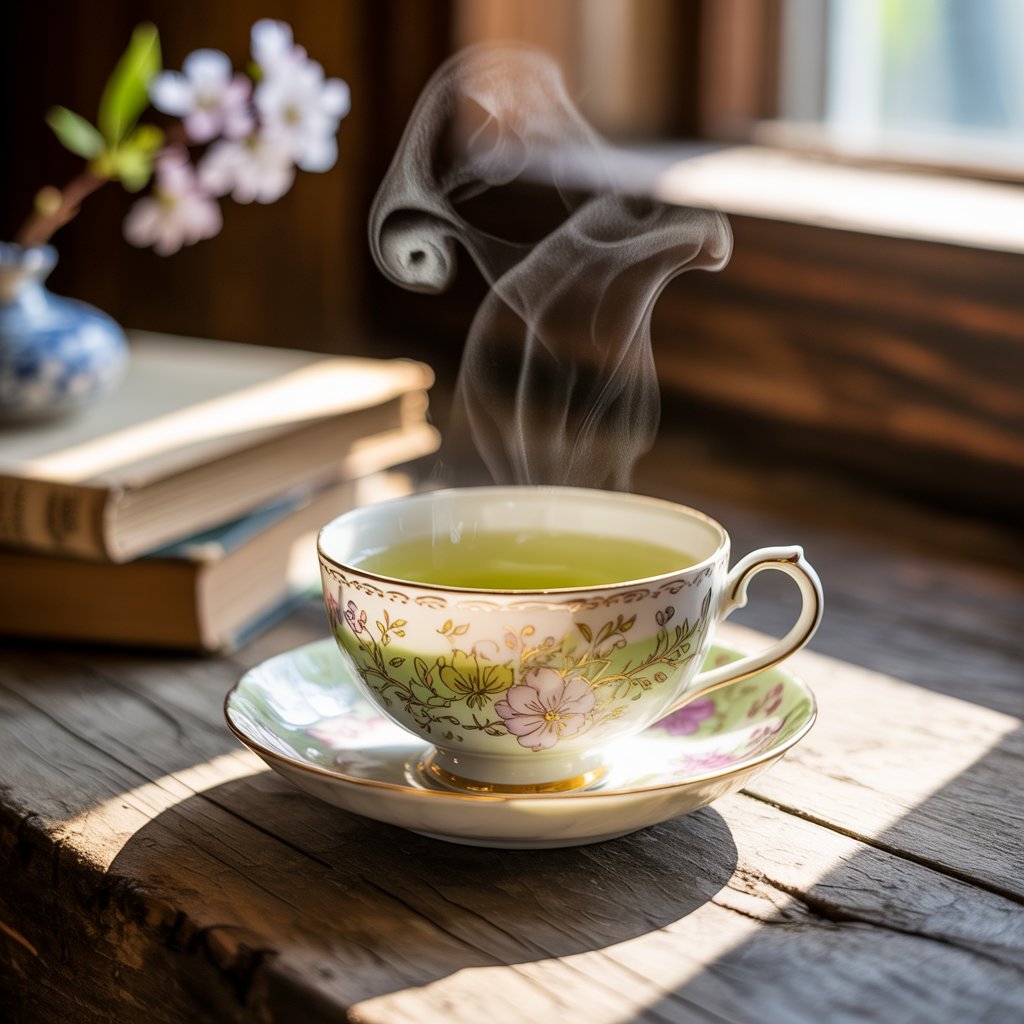Green tea has a reputation as a superdrink—praised for its antioxidants, metabolism-boosting effects, and mind-calming properties. But one question continues to divide even the most health-conscious crowd:
What does green tea taste like? Bitter or refreshing?
Let’s clear up the confusion. The flavor of green tea can range from grassy and vegetal to nutty, sweet, or intensely bitter. If your first sip reminded you of spinach water, you’re not alone—but you may have just brewed it wrong or tried a variety that doesn’t suit your palate.
In this comprehensive guide, we explore the science, flavor profiles, brewing methods, and even genetics behind green tea’s complex taste. So before you toss that cup, read on.
Quick Answer: What Does Green Tea Taste Like?
Green tea generally tastes grassy, vegetal, slightly astringent, and sometimes sweet. The final flavor depends on the type of tea, how it’s grown, and how it’s brewed. When prepared correctly, green tea is often described as clean, refreshing, and soothing. When over-steeped or brewed too hot, it can turn bitter, harsh, or even metallic.
The Science Behind Green Tea’s Taste
The flavor of green tea isn’t just about the leaves—it’s pure chemistry. The primary components that shape its taste include:
- Catechins (EGCG)
These powerful antioxidants give green tea its health benefits—and its bitter bite. Epigallocatechin gallate (EGCG) is the most abundant catechin and contributes to both the tea’s slightly sharp taste and anti-inflammatory properties.
Fact: A typical cup of green tea contains around 80–100 mg of EGCG, depending on the leaf grade and brewing time.
- L-Theanine
An amino acid responsible for the umami or savory sensation in high-quality green teas like Gyokuro. It also produces a calming effect, balancing the caffeine for a smooth, relaxing experience.
- Tannins and Polyphenols
These compounds are responsible for astringency, that dry-mouth feeling you may get with over-brewed tea. They’re also found in wine and dark chocolate.
- Caffeine
Green tea contains about 30–50 mg of caffeine per cup, which gives a slight bitterness and a mental boost without the crash of coffee.
Bitter or Refreshing? It Depends on the Brew
Even the best green tea can taste bad if it’s brewed incorrectly. Here’s how to control the outcome:
Water Temperature
Boiling water can burn delicate green tea leaves, releasing too many tannins and catechins at once. This makes your cup overly bitter.
✅ Ideal range: 160°F to 185°F (70°C to 85°C)
Tip: Let boiling water cool for 1–2 minutes before pouring.
⏱️ Steeping Time
Too long = too bitter. Too short = too bland. Balance is key.
✅ Ideal time: 1–3 minutes
Water Quality
Filtered water brings out a cleaner, smoother taste, while hard water can leave a mineral aftertaste.

Taste by Type: Flavor Profiles of Popular Green Teas
Not all green teas taste the same. Here’s how some of the most common types compare:
| Type of Green Tea | Flavor Profile | Bitterness | Origin | Caffeine Level |
| Sencha | Grassy, fresh, slightly sweet | Medium | Japan | Moderate |
| Matcha | Bold, creamy, earthy, umami | High | Japan | High |
| Gyokuro | Sweet, smooth, deep umami | Low | Japan | Moderate |
| Dragon Well | Nutty, toasty, mild sweetness | Low | China | Moderate |
| Gunpowder | Smoky, strong, slightly metallic | High | China | High |
Pro tip: Try cold brewing matcha or sencha for a smoother, less bitter taste.
What Does Green Tea Taste Like Without Sugar, Honey, or Milk?
Natural vs. Modified Flavors
Green tea in its purest form delivers a grassy, vegetal, and mildly astringent taste. It’s not sweet, and it doesn’t coat your mouth like milk tea. Instead, it feels light, clean, and slightly dry on the finish.
But many commercial teas modify that flavor dramatically:
Natural Green Tea Flavor
- Tastes like: Fresh-cut grass, spinach, seaweed, or light broth
- Mouthfeel: Astringent, dry but clean
- Aroma: Earthy, sometimes floral depending on the variety
- When cold brewed: Refreshing and mellow
- Best for: Purists, organic drinkers, and those watching sugar intake
Modified Green Tea (With Sweeteners or Add-ins)
- Tastes like: Sweet, creamy, flavored drinks (e.g., jasmine, peach, lemon)
- Mouthfeel: Richer, more rounded, less drying
- Aroma: Fruity or floral due to additives
- Often sold as: Bottled green tea, boba drinks, or tea lattes
- Best for: First-timers, or those easing into green tea
Note: While honey or milk can tame bitterness, they may also reduce the absorption of catechins—the key antioxidant compound in green tea.
Green Tea Taste by Harvest Season
The time of year when green tea is harvested greatly influences its flavor, aroma, and bitterness. Here’s a breakdown of how first flush, second flush, and autumn harvests taste differently:
First Flush (Ichibancha – Spring)
- Flavor: Sweet, floral, mild umami
- Bitterness: Low
- Notes: Considered the highest quality in Japan. Leaves are tender and rich in L-theanine.
- Try: High-grade Sencha or Gyokuro for a smooth, vegetal experience
☀️ Second Flush (Nibancha – Summer)
- Flavor: Bolder, more astringent
- Bitterness: Medium to high
- Notes: Higher in catechins and caffeine. Often used in everyday tea blends or bottled drinks.
Autumn Harvest (Sanbancha)
- Flavor: Earthy, mild, slightly woody
- Bitterness: Low to moderate
- Notes: Budget-friendly, lower in aroma and complexity
Tip: For the freshest and most refined taste, choose first flush loose-leaf tea harvested in early spring.
Taste Evolution: First-Time Drinkers vs. Enthusiasts
First Impressions
Many people describe their first green tea experience as “grassy,” “earthy,” or “weirdly vegetal.” Some even say it tastes like boiled spinach.
Palate Development
With repeated exposure, your palate adjusts. You begin to detect layers of sweetness, mild umami, and refreshing astringency.
“At first, I hated it,” says Mira, a yoga instructor from Portland. “Now I brew Sencha every morning—it feels like a clean slate for my body and mind.”
Why Is My Green Tea So Bitter?
Here are the top reasons your green tea may taste off:
- Too hot: Boiling water damages flavor compounds.
- ⏳ Too long: Oversteeping extracts excessive catechins and tannins.
- Low-grade leaves: Dust and fannings (used in cheap bags) release more bitterness.
- Poor storage: Exposure to light, air, or moisture can degrade flavor.
How Storage & Freshness Affect Green Tea Flavor
Even the best green tea can taste flat, stale, or overly bitter if it’s been improperly stored or kept too long.
Why Freshness Matters
Green tea is more delicate than black or oolong tea. The aromatic compounds and amino acids break down quickly after exposure to:
- Air (oxygen) – causes oxidation and loss of flavor
- Light – degrades chlorophyll and antioxidants
- Humidity – encourages mold and flavor contamination
✅ Best Storage Practices
- Store in an airtight, opaque container
- Keep in a cool, dry cupboard away from light and heat
- Avoid storing near spices or coffee (tea absorbs odors!)
- Use within 6–9 months of purchase for optimal flavor
Fun Fact: Japanese green teas like Sencha and Matcha degrade faster due to their steam-based processing method. Chinese pan-fired teas like Dragon Well stay fresh longer.
How to Make Green Tea Taste Better (Without Losing Its Benefits)
Don’t reach for the sugar just yet! Here are smarter ways to improve taste naturally:
Add Lemon or Citrus
Lemon brightens flavor and boosts antioxidant absorption.
Infuse with Mint or Ginger
Mint gives a cool finish. Ginger adds warmth.
Cold Brew It
Brewing green tea in cold water for 6-8 hours in the fridge reduces bitterness and smooths out the tea.
Try Japanese Methods
Using a kyusu teapot with loose-leaf tea gives you more control over flavor and steeping.
Best Foods to Pair with Green Tea (Flavor Balance Guide)
Pairing green tea with the right foods can enhance the taste of the tea and your meal. Some combinations bring out the umami notes or smooth out the bitterness.
| Green Tea Type | Best Pairing Foods | Why It Works |
| Sencha | Steamed veggies, rice dishes | Enhances grassy umami and freshness |
| Matcha | Pastries, dark chocolate | Balances bold bitterness with sweetness |
| Gyokuro | Sushi, white chocolate | Complements the deep umami richness |
| Dragon Well | Almond cookies, stir-fried tofu | Nutty notes align with toasted flavors |
| Gunpowder | Moroccan lamb, spiced couscous | Cuts through strong, bold flavors |
️ Pro Tip: Drink Sencha between bites of savory meals to cleanse your palate and enhance digestion.
Your Genes Might Decide If You Like Green Tea
Yes, really. Scientists have identified PROP taste receptor genes that influence how we perceive bitterness.
- Super-tasters: Highly sensitive to bitter tastes—may dislike green tea
- Non-tasters: Less sensitive—may find green tea smoother or more pleasant
Fact: Roughly 25% of people are super-tasters. If you’re one of them, start with Gyokuro or Dragon Well, which are naturally sweeter.
Green Tea Flavor Around the World
Japan
- Common teas: Sencha, Gyokuro, Matcha
- Flavor: Grassy, umami, delicate
- Culture: Mindful tea drinking, ceremonies
China
- Common teas: Dragon Well, Gunpowder
- Flavor: Nutty, toasty, smoky
- Culture: Social and medicinal tea culture
Morocco
- Drink: Mint green tea (Gunpowder + mint + sugar)
- Flavor: Sweet and cooling
USA/UK
- Often bottled or flavored (e.g., peach green tea)
- Flavor: Sweetened for broader appeal
- Consumer trend: Clean-label, unsweetened organic teas growing in demand
Green Tea Taste vs. Other Teas (Flavor Comparison Chart)
If you’re unsure whether green tea suits your taste, compare it with other types of tea. Each category brings unique flavors and mouthfeel based on its level of oxidation and processing.
| Tea Type | Flavor Profile | Astringency | Caffeine | Ideal For |
| Green Tea | Grassy, vegetal, light | Medium | Moderate | Health-conscious, refreshing seekers |
| Black Tea | Malty, robust, sweet | High | High | Coffee lovers, bold taste |
| White Tea | Floral, delicate, soft | Low | Low | Beginners, sensitive palates |
| Oolong Tea | Floral, toasty, creamy | Medium | Moderate | Adventurous tea drinkers |
| Herbal Tea* | Fruity, spiced, earthy | None | None | Caffeine-free options |
*Note: Herbal teas aren’t “true teas” as they don’t come from the Camellia sinensis plant.
FAQs About the Taste of Green Tea
❓ Is green tea supposed to be bitter?
Not necessarily. Bitterness is common with poor brewing or low-quality leaves. Good green tea should have balance—a little astringency with refreshing undertones.
❓ What does matcha taste like?
Matcha has a strong, earthy, umami-rich flavor. It’s more intense than regular green tea and can taste bitter if not whisked properly.
❓ Why does my green tea taste like seaweed?
Certain Japanese teas like Sencha and Gyokuro naturally have a marine-like, seaweed flavor due to high amino acid (L-theanine) content.
❓ Can I sweeten green tea?
Yes, but go light. Honey, stevia, or a slice of fruit can enhance flavor without masking the benefits.
❓ Does cold green tea taste different?
Yes—cold-brewing lowers bitterness and brings out sweeter, milder notes.
Final Thoughts: Bitter, Refreshing, or an Acquired Taste?
Green tea is one of the most nuanced drinks on the planet. Whether it strikes you as bitter or refreshing depends on its variety, how it’s brewed, and your own taste receptors. With a little patience and exploration, many discover green tea isn’t just tolerable—it’s addictive in the best way.
If you’ve been turned off by a harsh cup in the past, don’t give up just yet. The right brew might surprise you.
Try This!
Start with a cold-brewed Dragon Well or mint-infused Sencha if you’re new to green tea. These gentler flavors are more forgiving and beginner-friendly.







